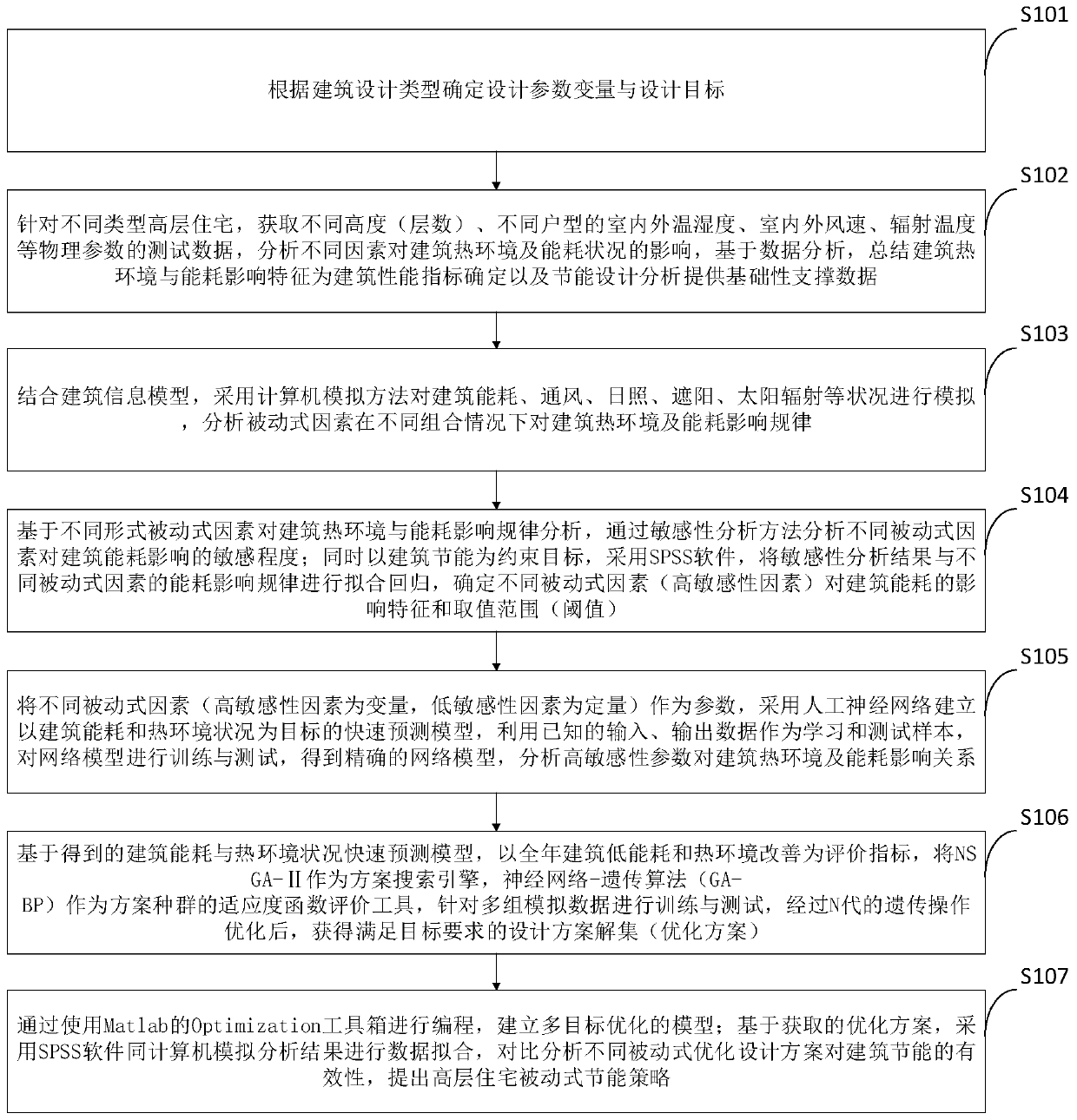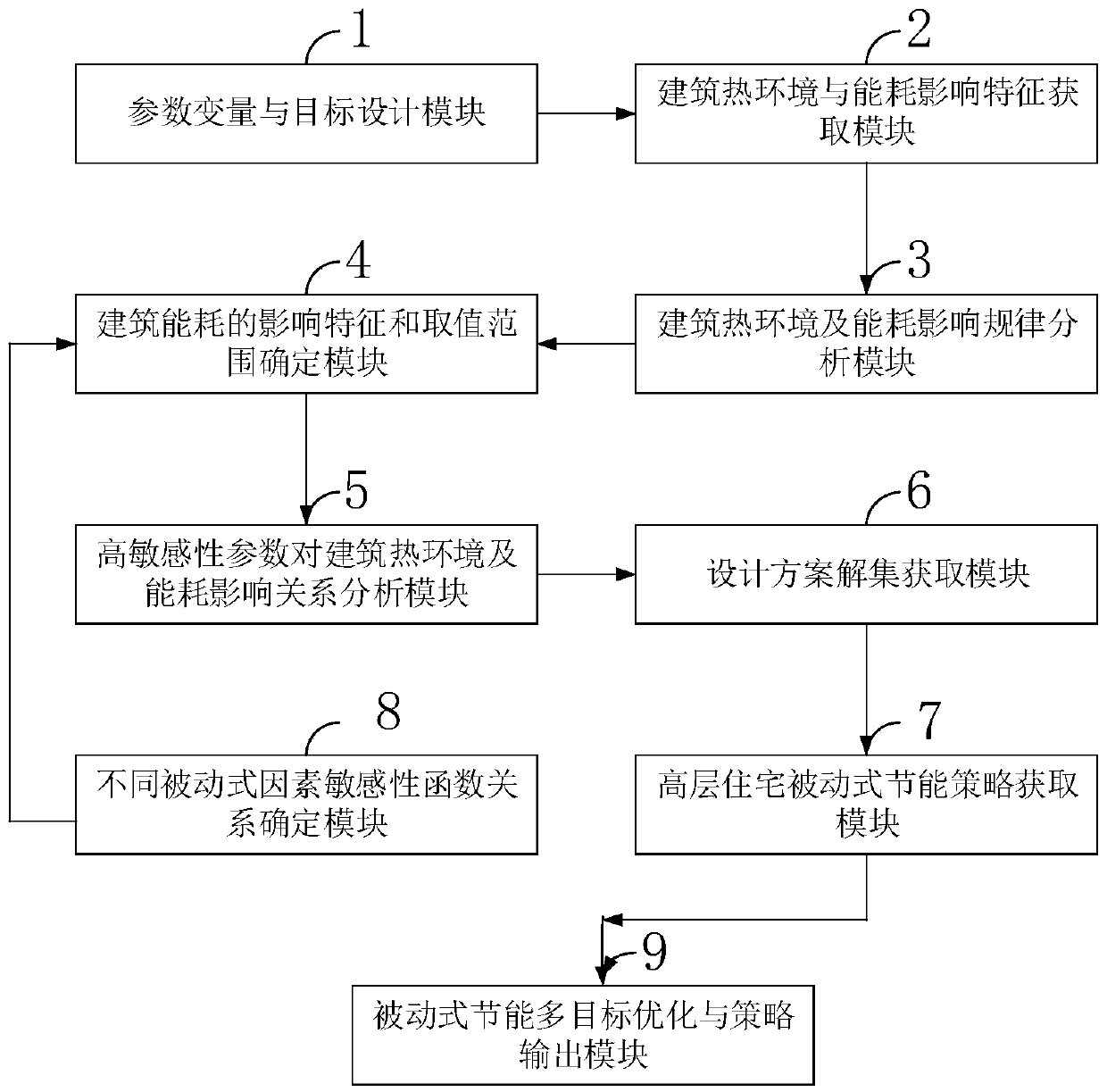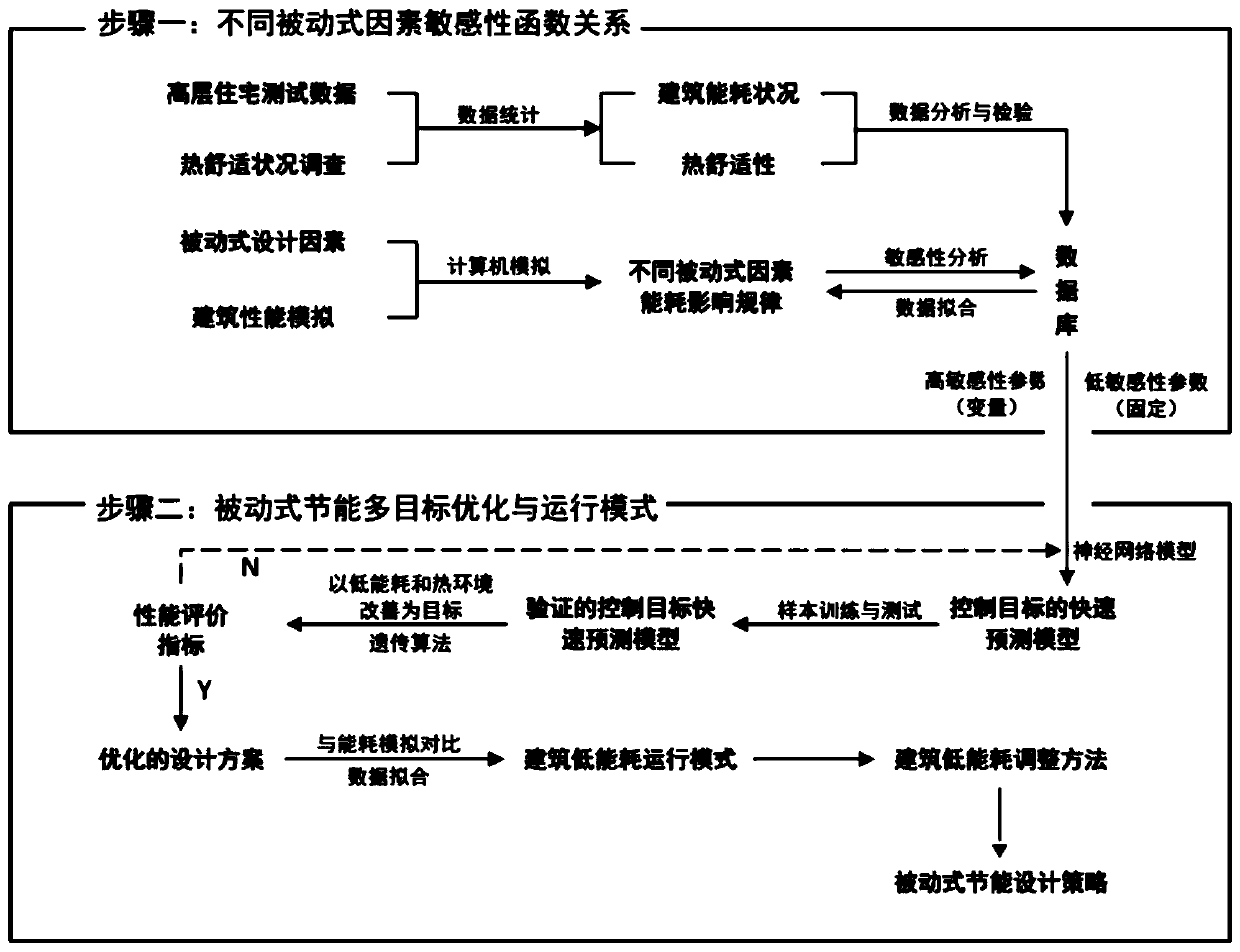Passive energy-saving reverse design system and method for high-rise building
A technology of high-rise residential and reverse design, applied in system integration technology, design optimization/simulation, information technology support system, etc., can solve problems such as large amount of convergent data processing, difficulty in optimization, difficulty in obtaining ideal data results, etc. , to achieve multi-objective optimization and improve design efficiency
- Summary
- Abstract
- Description
- Claims
- Application Information
AI Technical Summary
Problems solved by technology
Method used
Image
Examples
Embodiment 1
[0095] The passive energy-saving reverse design method for high-rise residential buildings provided by the embodiments of the present invention includes:
[0096] Step 1. Determine the design parameter variables and design objectives according to the type of architectural design.
[0097] Step 2: Analyze the impact of different factors on the thermal environment and energy consumption of the building. Based on the analysis of test data, summarize the characteristics of the impact on the thermal environment and energy consumption of the building to provide basic supporting data for the determination of building performance indicators and energy-saving design analysis. Combined with the building information model, the computer simulation method is used to simulate the building energy consumption, ventilation, sunshine, sunshade, solar radiation and other conditions, and analyze the influence of passive factors on the building thermal environment and energy consumption under diffe...
Embodiment 2
[0105] The invention discloses a passive parametric energy-saving optimization design method for high-rise residential buildings, which is different from traditional high-rise residential design methods. On the premise of focusing on the passive energy-saving design optimization method, the focus on architectural design results is transformed into design process and control s concern. This design method provides more possibilities for the combination of energy saving concept and parametric design.
[0106] Sensitivity analysis is a method of how the uncertainty of model input affects the model output, that is, the study of the influence of uncertain parameter input on the uncertainty of model output. Its main content is to qualitatively or quantitatively analyze how the change of model output is allocated to the uncertainty of model input parameters. In simple terms, it is to analyze the degree of influence of each input parameter on model output. Sensitivity analysis is esse...
PUM
 Login to View More
Login to View More Abstract
Description
Claims
Application Information
 Login to View More
Login to View More - R&D
- Intellectual Property
- Life Sciences
- Materials
- Tech Scout
- Unparalleled Data Quality
- Higher Quality Content
- 60% Fewer Hallucinations
Browse by: Latest US Patents, China's latest patents, Technical Efficacy Thesaurus, Application Domain, Technology Topic, Popular Technical Reports.
© 2025 PatSnap. All rights reserved.Legal|Privacy policy|Modern Slavery Act Transparency Statement|Sitemap|About US| Contact US: help@patsnap.com



